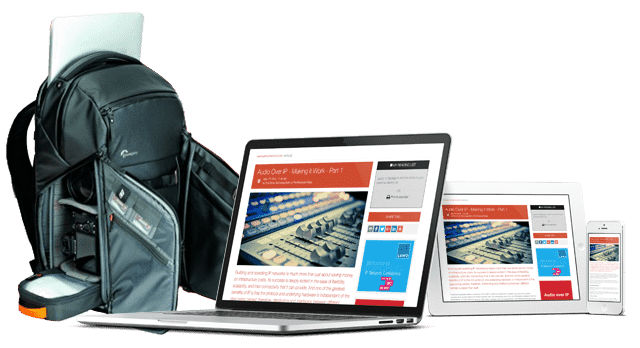Audio For Broadcast: Part 3 - Audio Processing Tools

Our series exploring the basic technology and tools of audio in broadcast continues with a collection of four articles which discuss the purpose and features of the essential audio sweetening tools; Dynamics, EQ and Noise Control.
About 'Audio For Broadcast'
This series is not aimed at audio A1’s, it is intended as a reference resource for the ‘all-rounder’ engineers and operators who encounter and must deal with audio on a day-to-day basis but who are not audio specialists… and everyone who wants to broaden their knowledge of how audio for broadcast works.
In our frenetic and challenging working lives, more and more jobs are multi-skilled and adaptive, and we’re often expected to cover more functions than we are comfortable with. We can’t all be experts. Sometimes you don’t need to know everything about something. Sometimes we just need enough knowledge to get the job done.
Audio For Broadcast will publish in five parts during 2023. Details of all five parts can be found HERE.
About Part 3. Audio Processing Tools
Part 3 is a free PDF download containing 4 articles:
Article 1 : Dynamics Processors
Keeping audio levels under control is the foundation of audio mixing, and Dynamics Processors give us tools to automate level control in various ways.
Article 2 : Equalizers (EQ)
EQ is one of the central tools of the audio production process and with a modest amount of knowledge and practice, a little can go a very long way to improving the subjective quality of a broadcast.
Article 3 : When Is A Sound Good?
Our partner Lawo discuss the subjective nature of what makes audio sound good and some of the fundamental principals of approaching a mix.
Article 4 : Noise & Signal Repair
Understanding where noise creeps in and how to minimize it are key audio skills but sometimes, inevitably, modern noise reduction tools are a lifesaver.
Part of a series supported by
You might also like...
Live Sports Production: Camera To Truck
Much of the OB production infrastructure has moved to IP, but has the connectivity between the cameras and the OB or backhaul also migrated to IP?
Sports Graphics Production: The Rise Of The VP-AR Sports Studio
Live Sports Production has widely embraced Virtual & Augmented Reality techniques. Here we discuss the challenges of creating studio environments with a focus on camera motion tracking.
Big Chip Cameras For Broadcast: The History Of The Camera Sensor
Understanding the motivations and implications of using large sensors in broadcast, demands an examination of the historical relationship between cinema and broadcast camera technology & creative production techniques.
Immersive Audio 2025: The Rise Of Next Generation Audio
Immersive audio has gone spatial with the addition of height control and NGA formats to support it, and consumer demand is booming… but it is all still about the experience.
Live Sports Production: Exploring The Evolving OB
The first of our three articles is focused on comparing what technology is required in OBs and other venue systems to support the various approaches to live sports production.








